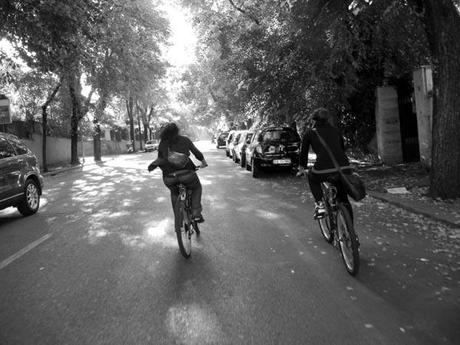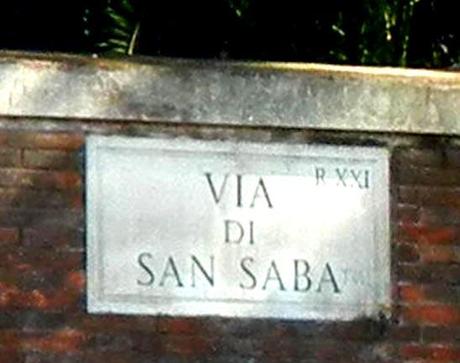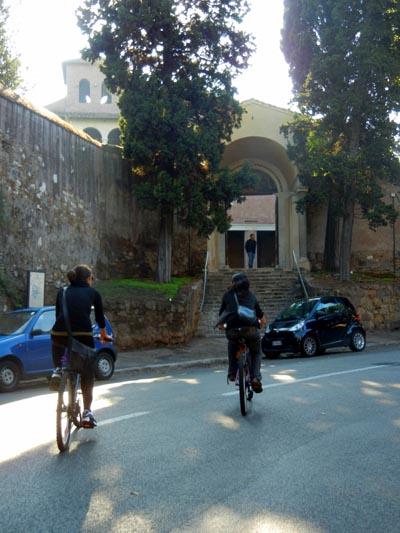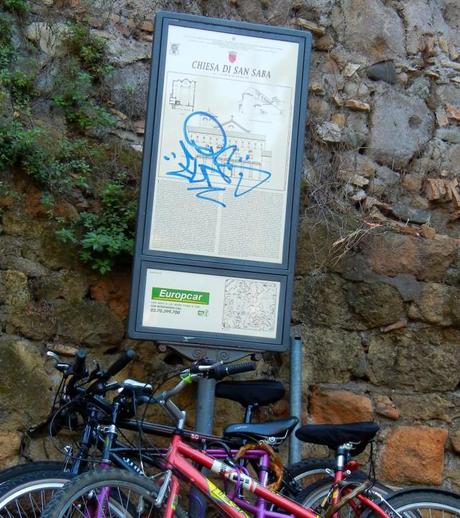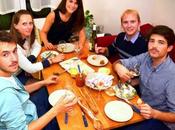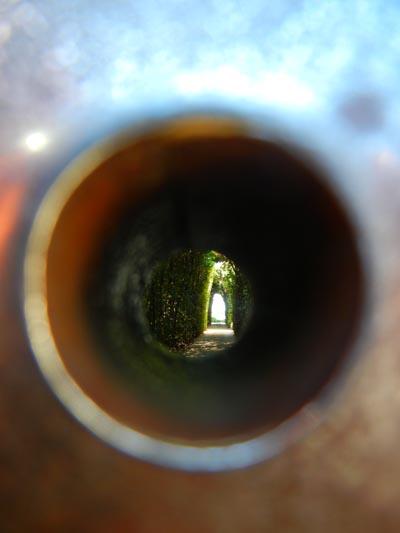
serratura del Priorato dei Cavalieri di Malta...guardateci un po' dentro!!
Il più a sud dei sette colli di Roma, l’Aventino è oggi una delle zone più belle ed affascinanti di Roma.
ValDi lo ha esplorato in lungo e in largo….
The most southern of the seven hills of Rome, the Aventine is one of the most beautiful and fascinating areas of Rome.
Valdi has explored it far and wide ….
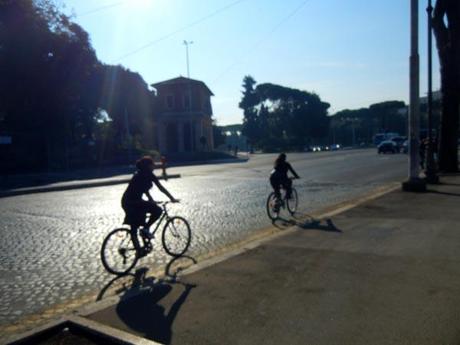
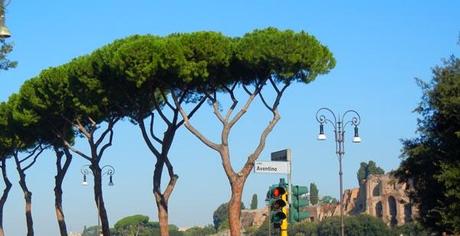 Alto fino a 46m, le sue pendici arrivano a sfiorare il Tevere.
Alto fino a 46m, le sue pendici arrivano a sfiorare il Tevere.
Sul versante sud-orientale è collegato ad un altro colle, di minori dimensioni, detto Piccolo Aventino.
Con la suddivisione augustea, i due settori vennero separati in diverse regioni: XIII – Aventinus e XII-Piscina Publica .
Il colle venne poi inserito come parte integrante della città con Anco Marzio, come sede per i profughi delle città da lui conquistate.
Per lungo tempo fu abitato principalmente da plebei, in netta opposizione con il Palatino, sede invece dei Patrizi. La sua vicinanza all’antico porto fluviale dell’Emporium lo connotò come un quartiere mercantile.
A partire dall’inizio dell’età imperiale, quando ormai la vita economica della città si era spostata lentamente nella pianura sottostante, il colle divenne sede di numerose residenze aristocratiche tra cui quelle di Traiano e di Adriano, non ancora imperatori.
Fu a causa di questa trasformazione che, successivamente, la zona venne pesantemente devastata dai Goti di Alarico nel sacco del 410.
Valdi ha deciso di iniziare il suo itinerario dal Piccolo Aventino!
It is high 46m, its slopes reach to touch the Tiber.
On the south-east is connected to another hill, smaller, called Little Aventine.
With the breakdown of Augustus, the two areas were separated into different regions: XIII – Aventinus and XII Publica-pool.
The hill was then inserted as an integral part of the city with Anco Marzio, as the seat for refugees from the cities which he had conquered.
For a long time it was inhabited mainly by plebeians, in sharp opposition to the Palatine Hill, the seat of the patricians. Its proximity to the river port Emporium connotes it further as a neighborhood of merchants.
Since the beginning of the imperial age, when the economic life of the city had moved slowly in the plain below, the hill became the site of numerous aristocratic residences including those of Trajan and Hadrian, before becoming emperors.
It was because of this transformation that the area was heavily devastated by the Goths of Alaric during the lots of 410 d.C.
Valdi has decided to start his journey from the Little Aventine!
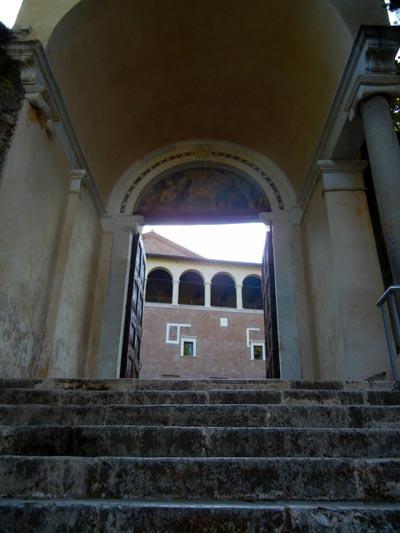
San Saba
Prima tappa: la chiesa di San Saba (orari apertura 16 settembre-14 giugno: h 8 -festivi 9.30 -12 / 16-19) …da cui prende il nome l’intero rione.
Per molto tempo, infatti, dopo la caduta dell’impero, la chiesa ed il relativo monastero rimasero le uniche parti abitate.
First stop: the church of San Saba (opening times September 16 to June 14: 8 h-Holidays 9:30 -12 / 16-19) … which gives its name to the entire area.
For a long time, in fact, after the fall of the empire, the church and its monastery were the only parts inhabited.
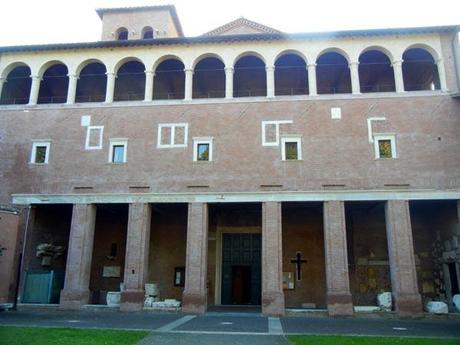
entrando a San Saba
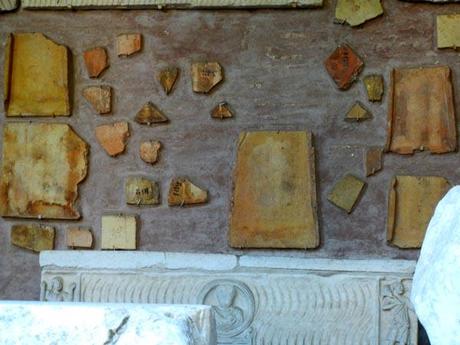
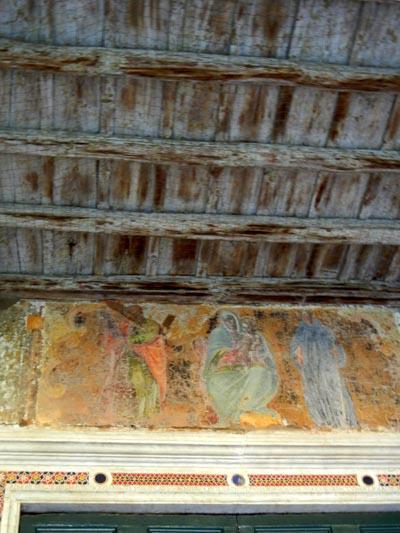
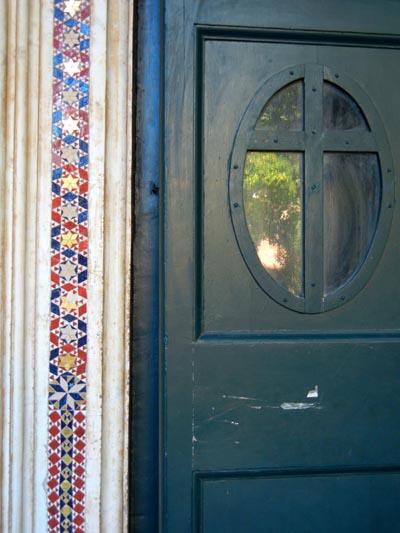 Il monastero risale all’VIII sec. quando Gerusalemme da San Saba vi fondò la sua comunità di monaci orientali in fuga dalla Palestina, travagliata dalle guerre. Il monastero all’epoca era molto noto, tanto da essere considerato uno dei più importanti della città, sede di interessanti attività diplomatiche con Costantinopoli ed il mondo barbarico.
Il monastero risale all’VIII sec. quando Gerusalemme da San Saba vi fondò la sua comunità di monaci orientali in fuga dalla Palestina, travagliata dalle guerre. Il monastero all’epoca era molto noto, tanto da essere considerato uno dei più importanti della città, sede di interessanti attività diplomatiche con Costantinopoli ed il mondo barbarico.



The monastery dates from the VIII century when Jerusalem from San Saba founded his community of monks fleeing from East Palestine, troubled by wars. The monastery at the time was known enough to be considered one of the most important of the city, home to some interesting diplomatic activities with Constantinople and the barbarian world.
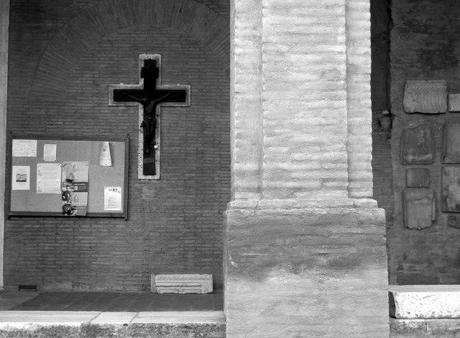 La sua proprietà passò successivamente dai benedettini, ai cluniacensi, ai cistercensi ed infine, nel 1573, al Collegio Germano Ungarico , che ancora oggi lo guida.
La sua proprietà passò successivamente dai benedettini, ai cluniacensi, ai cistercensi ed infine, nel 1573, al Collegio Germano Ungarico , che ancora oggi lo guida.

His estate passed by the Benedictines, the Cluny, the Cistercians, and finally, in 1573, the Board of Germano-Hungarian Empire, which still guides it.
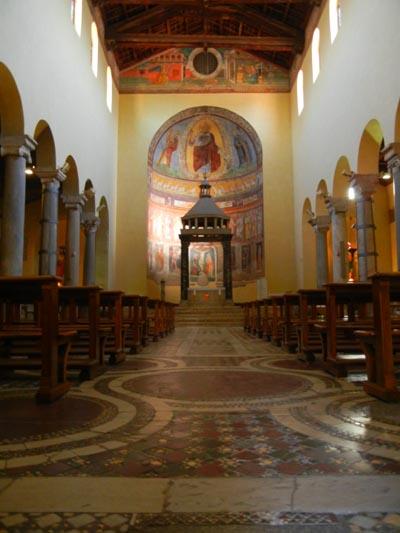
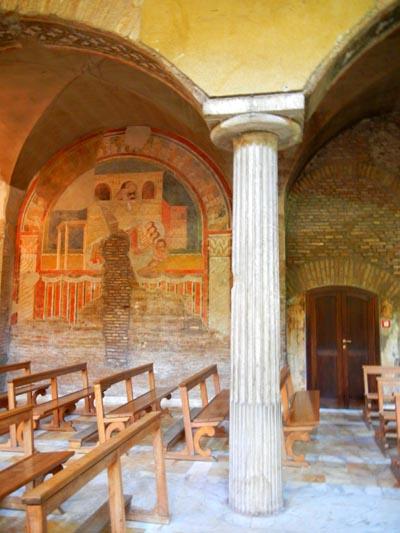

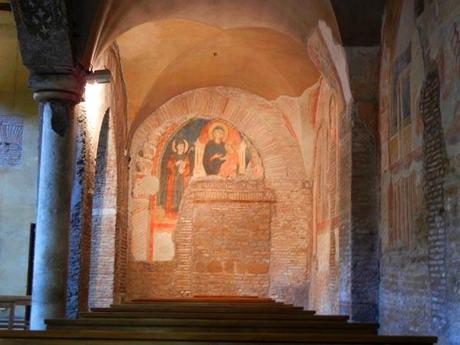
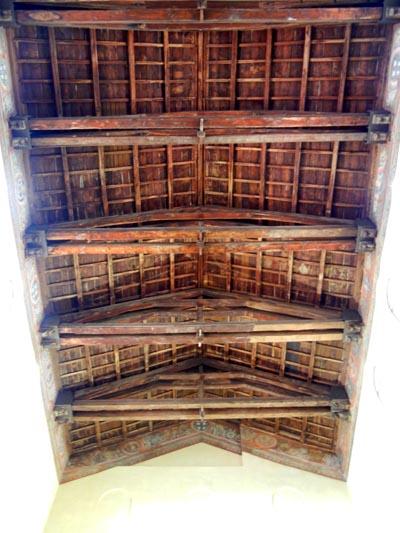
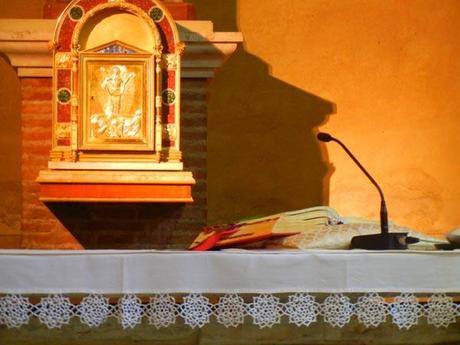
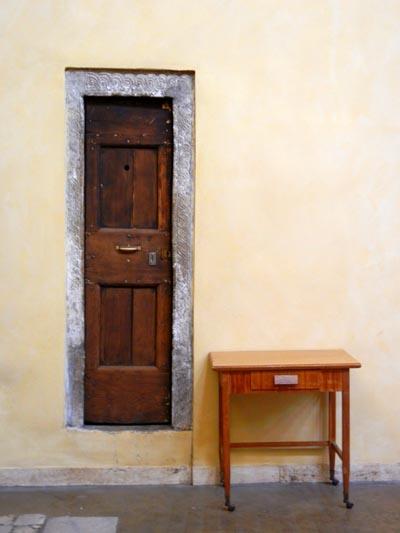
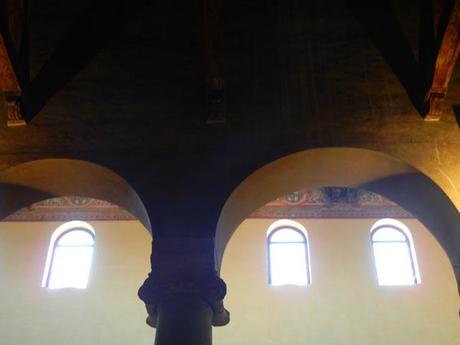 Lasciata la chiesa di San Saba, ci siamo avventurate alla scoperta del rione, caratterizzato per lo più da piccoli villini bifamiliari, ognuno con il proprio giardinetto. Abbiamo raggiunto piazza Gian Lorenzo Bernini, un po’ il cuore del Piccolo Aventino, rimanendo affascinate dalla bellezza dei dintorni e dalla piacevole atmosfera che si respira. Lungo la strada segnaliamo il Teatro Anfitrione.
Lasciata la chiesa di San Saba, ci siamo avventurate alla scoperta del rione, caratterizzato per lo più da piccoli villini bifamiliari, ognuno con il proprio giardinetto. Abbiamo raggiunto piazza Gian Lorenzo Bernini, un po’ il cuore del Piccolo Aventino, rimanendo affascinate dalla bellezza dei dintorni e dalla piacevole atmosfera che si respira. Lungo la strada segnaliamo il Teatro Anfitrione.








Leaving the church of San Saba, we went to the discovery of the district which is characterized mainly by small semi-detached villas, each with its own garden. We reached the square Gian Lorenzo Bernini, the heart of the Little Aventine, and we were fascinated by the beauty of the surroundings and the pleasant atmosphere. Along the way we point the Theatre Amphitryon.
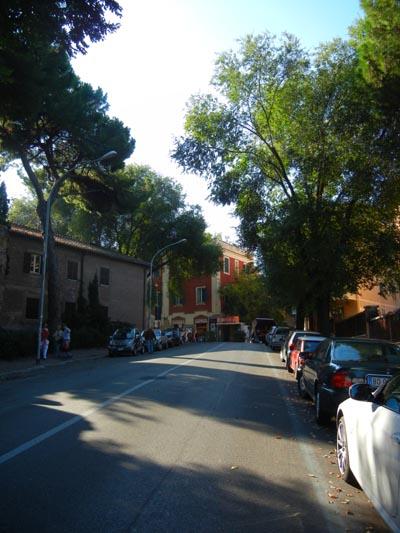
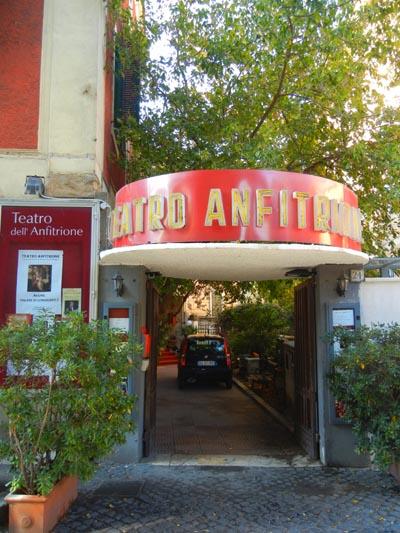
Teatro Anfitrione - Via di San Saba 24
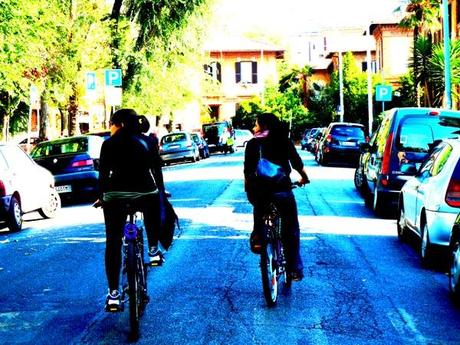
Piazza Gian Lorenzo Bernini
Il rione fu progettato da Quadrio Pirani, così come Testaccio. Tutte le strade hanno nomi di importanti architetti, Francesco Borromini, Baccio Pontelli, Palladio, Bramante, fino alla bella piazza Gian Lorenzo Bernini dalla quale si diramano una serie di vie meravigliose, silenziose, alberate.
The district was designed by Quadrio Pirani, as Testaccio. All roads have the name of famous architects such as Francesco Borromini, Baccio Pontelli, Palladio and Bramante, Bernini Gian Lorenzo, a beautiful square from which branch off a series of wonderful, quiet, tree-lined streets.
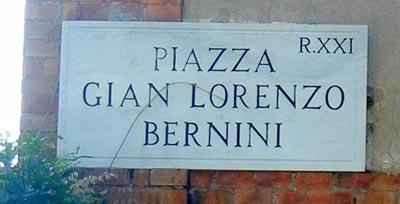
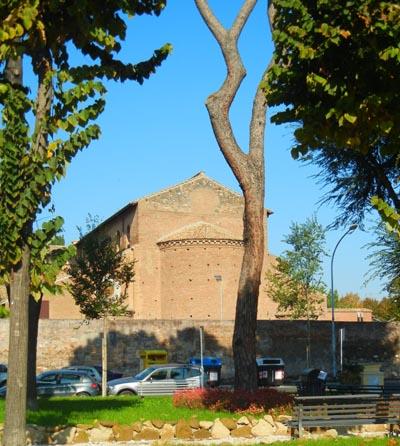
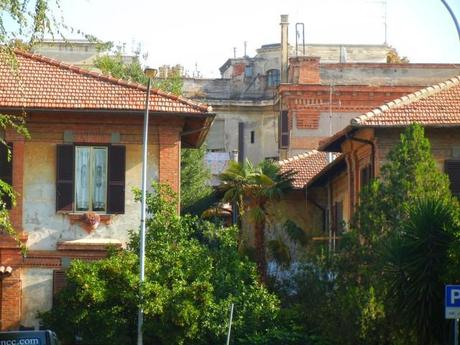
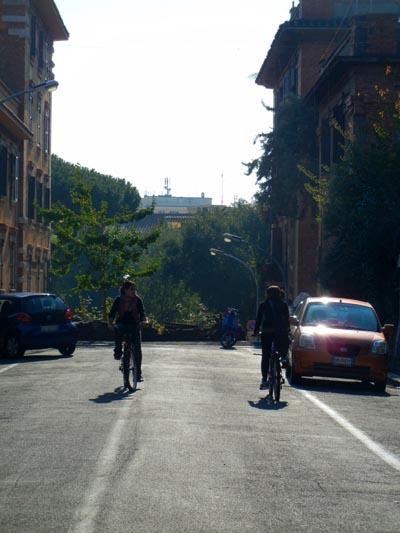
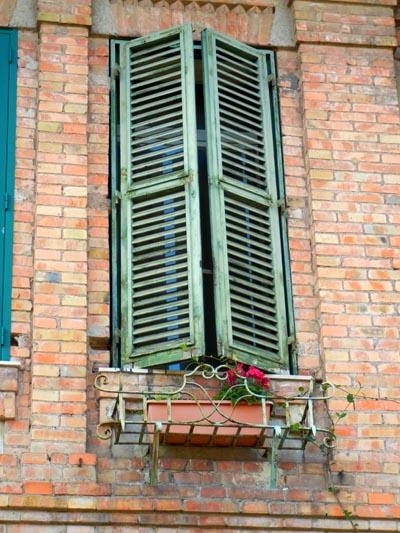
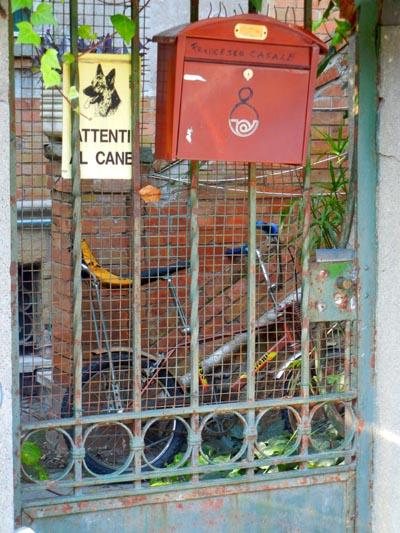 Passeggiando, proverete una sensazione di pace e serenità, vi sembrerà di essere lontani anni luce dal caos della città. Le palazzine di mattoni e le vecchie botteghe, ancora in essere, vi rimanderanno piacevolmente indietro nel tempo.
Passeggiando, proverete una sensazione di pace e serenità, vi sembrerà di essere lontani anni luce dal caos della città. Le palazzine di mattoni e le vecchie botteghe, ancora in essere, vi rimanderanno piacevolmente indietro nel tempo.






Non mancano, va anche detto, le tante salite e discese che tra loro si alternano, rendendo il percorso in bici vario e divertente.
Walking there will give you a feeling of peace and serenity and it’ll seem to you to be years away from the chaos of the city. The brick buildings and old shops, that are still open, they make you go back in time pleasantly.
There are also many up slopes and downhill slopes alternate with each other, making the bike path amusement.
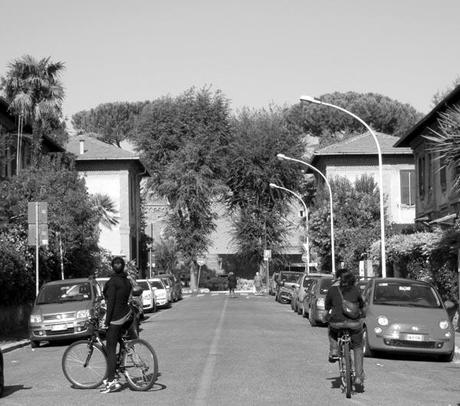
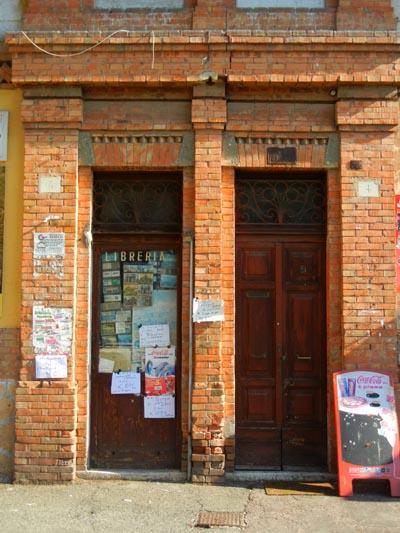

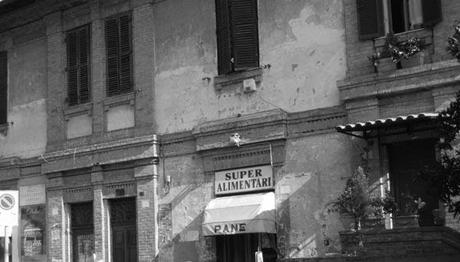 A questo punto è il momento di raggiungere l’altra parte…quella dell’Aventino!
A questo punto è il momento di raggiungere l’altra parte…quella dell’Aventino!




Farlo è semplicissimo, basta solo attraversare Viale Aventino e salire per Via di Santa Prisca. Sarà un po’ dura perchè tutta in salita, ma basterà fare una sosta per visitare la chiesa e tutto vi sembrerà più facile.
E poi diciamocelo….la bellezza del posto è un buon incentivo a pedalare! Seguiteci per credere!!
Now is the time to reach the other side … the Aventine!
Arriving is very simple…you have just to crossing Viale Aventino and go along Via di Santa Prisca.
It will be a little tough because is all uphill, but just take a break to visit the church and everything will seem easier.
And let’s face it …. the beauty of the place is a good incentive to bicycling! Follow us to believe!
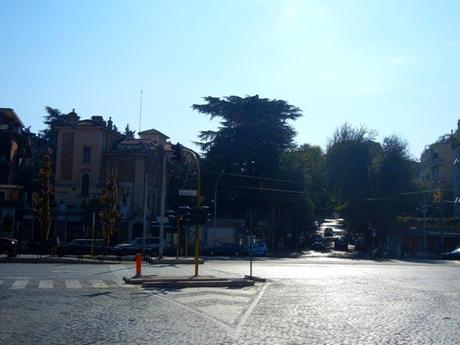
Piazza Albania - Viale Aventino
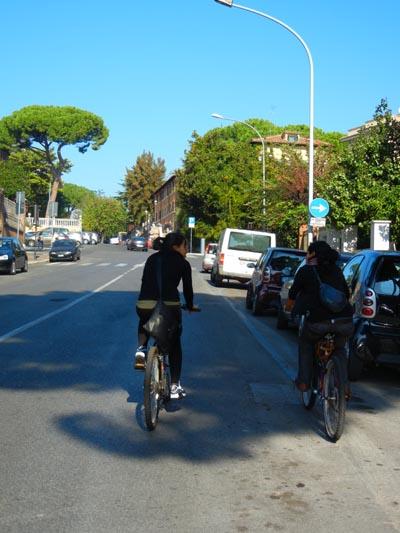
Via di Santa Prisca
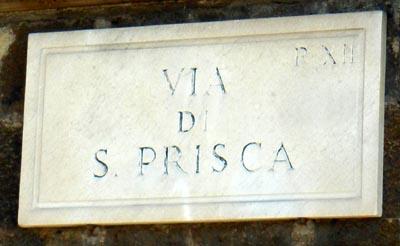


Santa Prisca
La chiesa di Santa Prisca (orario apertura invernale 1 ottobre-31 maggio h 8/18, festivi e domenica 8/10.30 – 12/18), costruita nel IV – V sec., è dedicata ad una martire, Prisca, decapitata sotto l’imperatore Claudio.
The Church of Santa Prisca (winter opening hours October 1 to May 31 h 8 / 18, public holidays and Sunday, 8/10/30 – 12/18), built in the IV – V century, is dedicated to a martyr Prisca, beheaded under the Emperor Claudius.
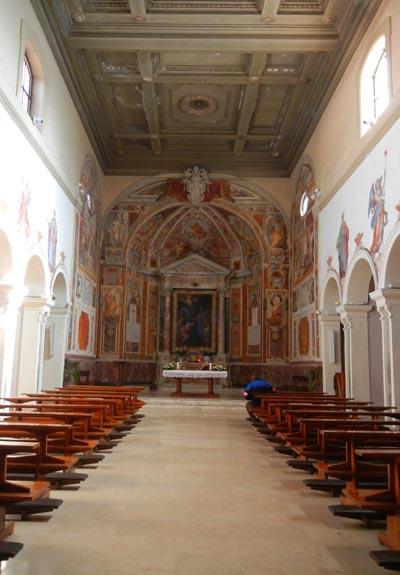
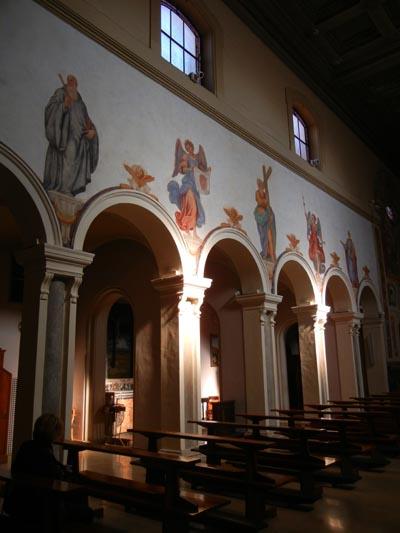 La tradizione vuole inoltre che San Pietro la scelse come dimora e che vi celebrò le prime messe impartendo il battesimo a tutti coloro che si convertivano.
La tradizione vuole inoltre che San Pietro la scelse come dimora e che vi celebrò le prime messe impartendo il battesimo a tutti coloro che si convertivano.


La chiesa sorge sulle rovine di un antico tempio romano, ma essendo stata rimaneggiata parecchie volte, non corserva molto del suo passato.
Tradition has it that St. Peter chose it as home, and who celebrated his first Masses and gave baptism to all those who were converted.
The church stands on the ruins of an ancient Roman temple, but since it was remodeled several times, it doesn’t preserve much of its past.
Il nostro itinarario continua….prossima tappa: il Giardino degli Aranci…o meglio il Parco Savello, uno splendido belvedere da cui ammirare tutta Roma.
Our path continues….next stop: the Garden of Orange…or rather Savello Park, a splendid viewpoint from which is possible to admire all of Rome.
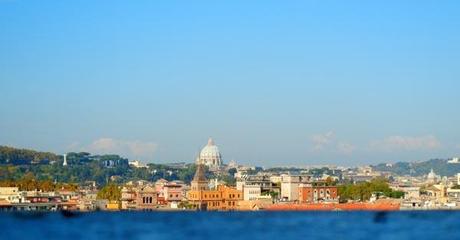
affacciatevi...belvedere Giardino degli Aranci
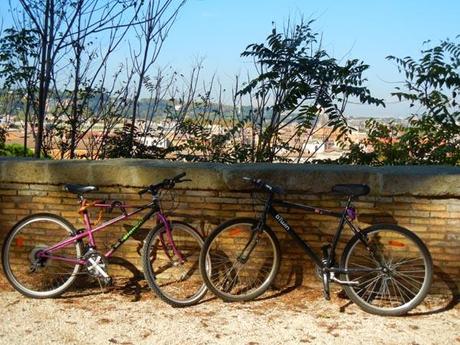 Così chiamato per via della presenza di numerose piante di aranci amari, il giardino venne costruito nel 1932 dall’architetto Raffaele de Vico a seguito di una nuova definizione urbanistica secondo la quale lo spazio utilizzato come orto dai Padri Domenicani sarebbe dovuto diventare spazio pubblico e un belvedere al pari di quello del Pincio e del Gianicolo.
Così chiamato per via della presenza di numerose piante di aranci amari, il giardino venne costruito nel 1932 dall’architetto Raffaele de Vico a seguito di una nuova definizione urbanistica secondo la quale lo spazio utilizzato come orto dai Padri Domenicani sarebbe dovuto diventare spazio pubblico e un belvedere al pari di quello del Pincio e del Gianicolo.

La sua struttura è molto semplice, si sviluppa intorno ad un viale mediano in asse con il belvedere. Questo è stato intitolato Viale Nino Manfredi, in ricordo del noto attore.
All’ingresso del parco troverete una antica vasca in granito decorata da un mascherone raccolto in una conchiglia.
So called because of the presence of numerous bitter orange trees, the garden was built in 1932 by Raffaele de Vico as a result of a new definition according to which urban space, used as a garden by the Dominican Fathers, would become a public space and viewpoint on a par with that of the Pincio and the Janiculum.
Its structure is very simple,it is built around a main street, called Viale Nino Manfredi, in memory of the famous actor.
At the entrance of the park there are the ancient granite tub decorated with a mask collected in a shell.
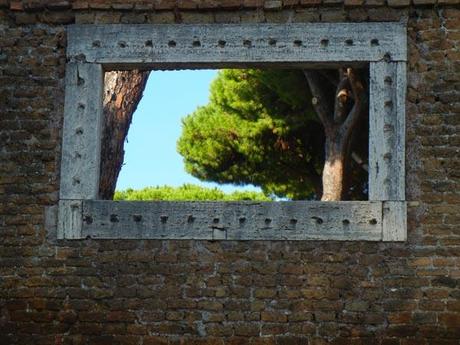

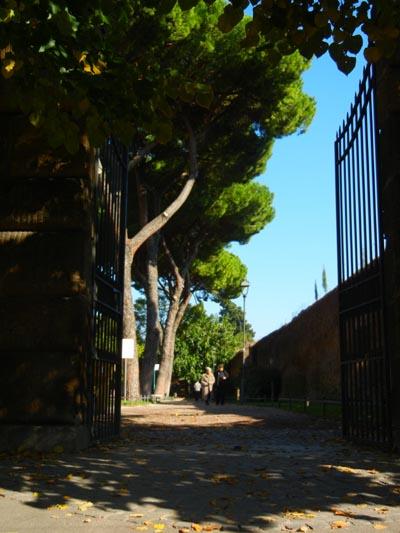
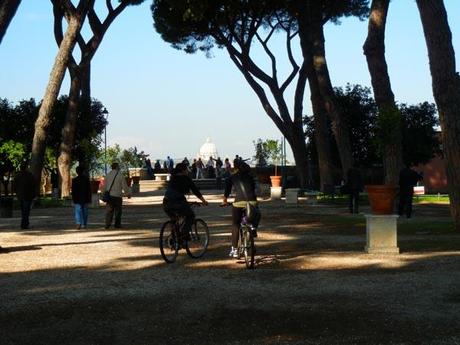
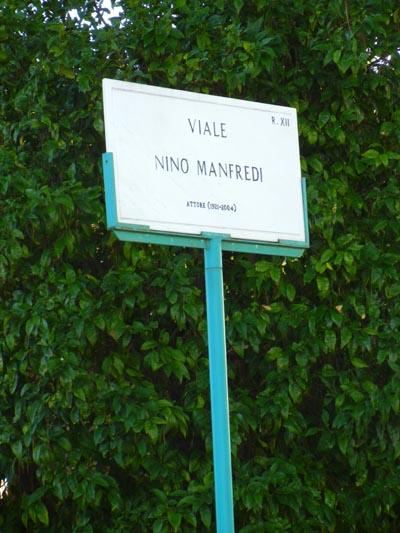
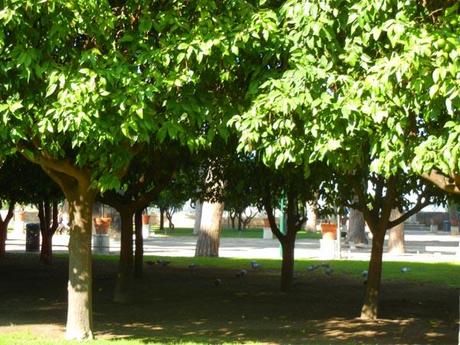
 L’atmosfera è molto romantica, la sensazione che si prova è di pace e serenità.
L’atmosfera è molto romantica, la sensazione che si prova è di pace e serenità.







Se volete rilassarvi…andateci..rimarrete piacevolmente soddisfatti!
The atmosphere is very romantic, the feeling you get is peace and serenity.
If you want to relax…go there…you will be pleasantly pleased!
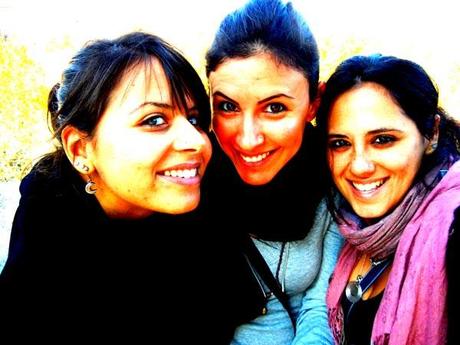
ValDi e la nostra fotografa
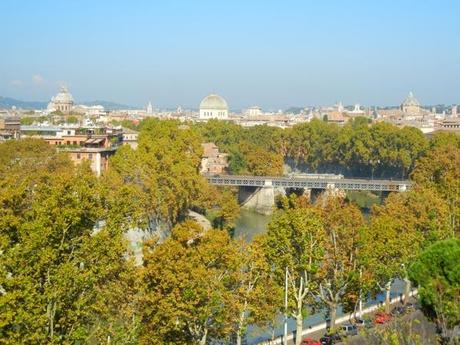
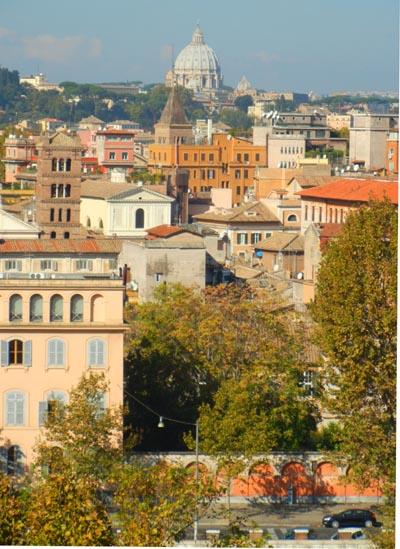
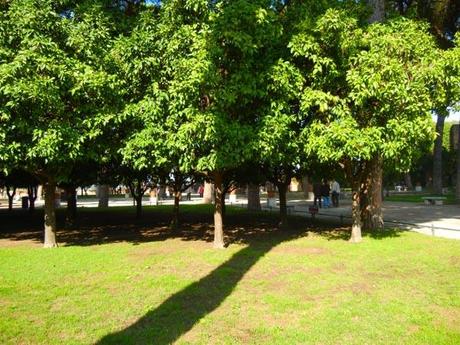
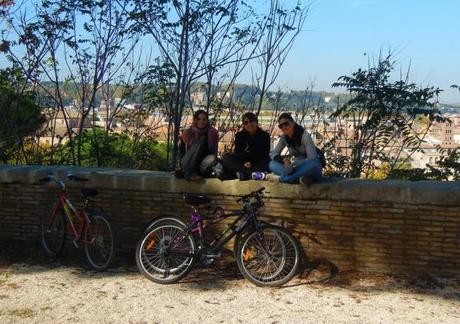 ovviamente…non finisce qui!
ovviamente…non finisce qui!





 Alto fino a 46m, le sue pendici arrivano a sfiorare il Tevere.
Alto fino a 46m, le sue pendici arrivano a sfiorare il Tevere.